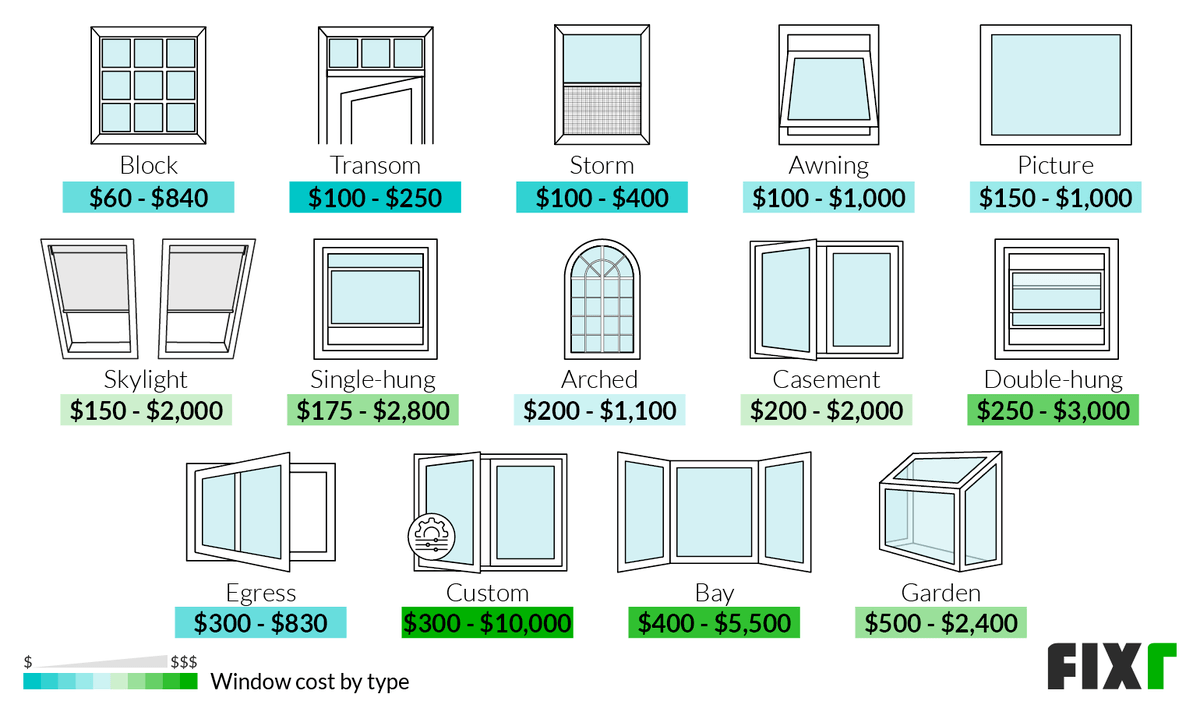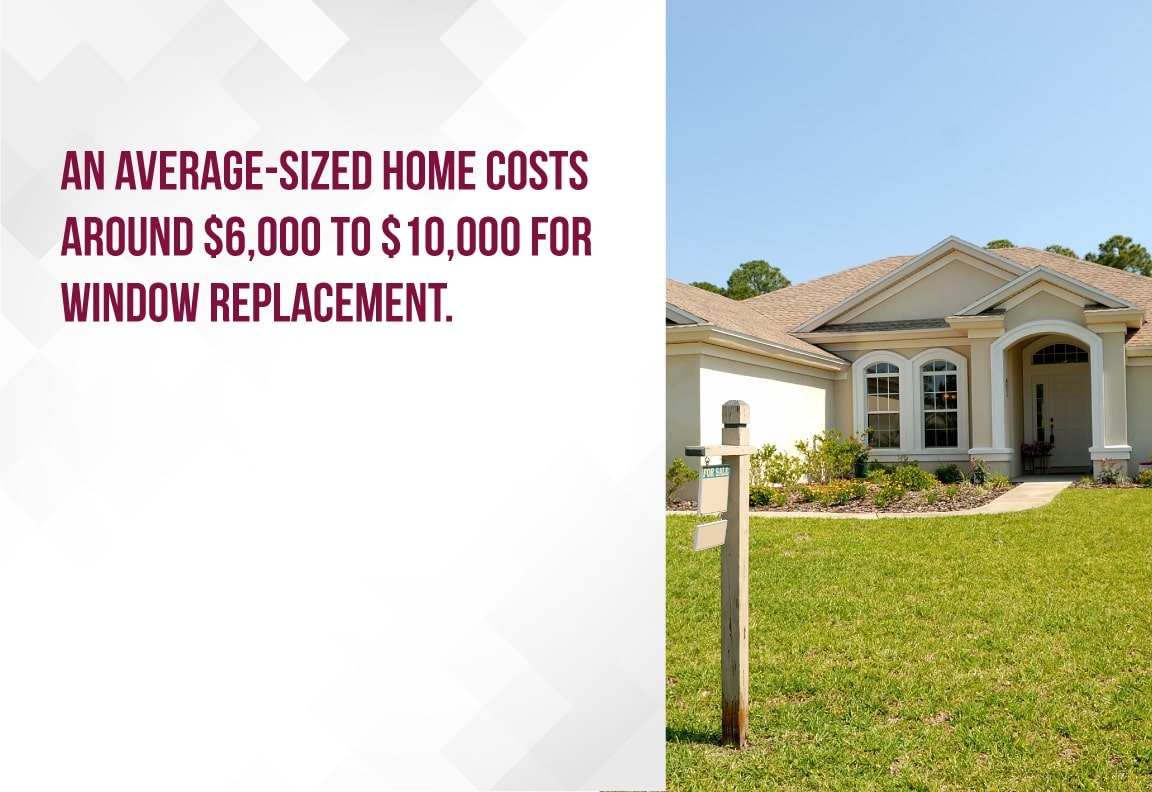As average cost for new windows in a house takes center stage, this opening passage beckons readers into a world crafted with good knowledge, ensuring a reading experience that is both absorbing and distinctly original. When considering new windows for a house, understanding the cost implications is crucial.
From factors influencing pricing to regional variations and additional expenses, this guide will provide a comprehensive overview to help you make informed decisions.
Factors influencing the average cost for new windows in a house
When considering the cost of installing new windows in a house, there are several factors that can significantly influence the final price. Understanding these factors is essential for homeowners looking to budget for window replacement projects effectively.
Window Material
The material of the window plays a crucial role in determining the overall cost. Common window materials include vinyl, wood, aluminum, and fiberglass. Vinyl windows are often the most affordable option, while wood windows tend to be more expensive due to their aesthetic appeal and durability.
Aluminum and fiberglass windows fall somewhere in between in terms of cost. The choice of material can impact both the initial cost of the windows themselves and their long-term maintenance expenses.
Window Size and Style, Average cost for new windows in a house
The size and style of the windows can also impact the cost of installation. Larger windows will require more materials and labor, leading to higher costs. Additionally, specialty window styles such as bay windows or custom shapes may come with a premium price tag due to the complexity of installation.
Quantity of Windows
The number of windows being replaced in a house will directly affect the total cost of the project. Installing multiple windows will naturally increase the overall expense, as each window requires materials and labor for installation. Homeowners should consider the quantity of windows they plan to replace when budgeting for the project.
Labor Costs
Labor costs play a significant role in the total cost of replacing windows. The complexity of the installation, accessibility of the windows, and the experience level of the contractors can all influence labor costs. Hiring reputable professionals who have the skills and expertise to install windows correctly is essential, but it can come at a higher price.
Energy Efficiency Features
Windows with energy-efficient features like double or triple glazing, low-emissivity coatings, and insulated frames may cost more upfront but can lead to long-term savings on energy bills. Homeowners should consider the energy efficiency of the windows they choose, as this can impact the overall cost of ownership over time.
Types of windows and their average costs

When considering new windows for your house, it’s important to understand the different types available and their associated costs. Each type of window offers unique benefits and comes with a different price tag.
Single-Hung Windows
Single-hung windows are a popular choice for many homes. They feature a fixed top sash and a bottom sash that can be raised for ventilation. On average, single-hung windows can cost between $100 to $400 per window, depending on the size and material.
Double-Hung Windows
Double-hung windows are similar to single-hung windows but allow both the top and bottom sashes to move. They offer increased ventilation and are easy to clean. The average cost for double-hung windows ranges from $150 to $600 per window, depending on the size and material.
Casement Windows
Casement windows are hinged on one side and open outward with a crank handle. They provide excellent ventilation and a tight seal when closed. The average cost for casement windows is between $200 to $1,400 per window, depending on the size, material, and energy efficiency rating.
Picture Windows
Picture windows are large, fixed windows that provide unobstructed views and natural light. They are a beautiful addition to any home but do not open for ventilation. The average cost for picture windows ranges from $300 to $1,200 per window, depending on the size and material.
Bay or Bow Windows
Bay or bow windows project outward from the house, creating a beautiful architectural feature. They often consist of multiple windows that are angled to create a curved shape. The average cost for bay or bow windows can vary greatly, ranging from $1,000 to $3,500 per window, depending on the size, material, and style.
Energy-Efficient Windows
Energy-efficient windows, such as those with multiple panes, low-E coatings, and insulated frames, can help reduce heating and cooling costs. While they may have a higher upfront cost, the long-term savings on energy bills can make them a cost-effective choice.
The average cost for energy-efficient windows starts at $500 per window and can go up to $1,500 or more, depending on the features and quality.Overall, the cost of new windows for your house will depend on the type, material, size, and energy efficiency rating you choose.
It’s essential to consider your budget and the long-term benefits of each type of window before making a decision.
Regional differences in average window installation costs

When it comes to the cost of installing new windows in a house, regional differences play a significant role in determining the overall price. Factors such as labor costs, material availability, and local regulations can all influence the final cost of window replacements.
Factors influencing regional price variations
Regional price variations in window installation costs can be attributed to several factors:
- Cost of living in the area
- Local building codes and regulations
- Competition among local window installation companies
- Accessibility to materials and suppliers
Specific regions with higher or lower average costs
Some regions are known for having higher or lower average costs for window replacements:
| Region | Average Cost |
|---|---|
| Urban Areas | Urban areas tend to have higher labor costs and stricter building codes, leading to higher average costs for window installations. |
| Rural Areas | Rural areas may have lower labor costs and less stringent regulations, resulting in lower average costs for window replacements. |
| Coastal Regions | Coastal regions often have higher material costs due to factors like saltwater corrosion, impacting the overall average cost of window installations. |
Additional expenses to consider when installing new windows: Average Cost For New Windows In A House

When planning for new window installation in your house, it is crucial to consider additional expenses that may arise beyond the initial purchase and installation costs. These extra costs can impact your budget significantly and should be factored in from the beginning to avoid any financial surprises along the way.
Permits and Regulations
- Before starting the installation process, check if you need any permits or approvals from the local authorities. Permit costs can vary depending on your location and the type of work being done.
- Make sure you comply with building codes and regulations to avoid any fines or delays in the project. Hiring a professional who is familiar with local requirements can help ensure everything is done correctly.
Trim Work and Finishing Touches
- After the windows are installed, you may need to invest in trim work to give them a polished look. This can include painting, caulking, or adding decorative elements around the window frame.
- Consider the cost of window treatments like blinds or curtains to enhance the aesthetics of your new windows. These finishing touches can add to the overall expense of the project.
Potential Repairs and Adjustments
- If any structural issues are uncovered during the installation process, additional repairs may be needed. It’s essential to have a contingency fund set aside for unexpected repairs to prevent any delays or compromises in the project.
- Adjustments to the window frames or sills may be necessary to ensure proper fit and functionality. These adjustments can incur extra costs, so it’s wise to budget for them in advance.
Tips for Budgeting and Planning
- Allocate a buffer amount in your budget to account for unforeseen expenses that may arise during the window installation process.
- Get multiple quotes from different contractors to compare prices and services offered. This can help you choose a cost-effective option without compromising on quality.
- Communicate openly with your contractor about your budget constraints and expectations. A transparent discussion can help avoid any misunderstandings and ensure a smooth project completion.
Closing Notes
In conclusion, navigating the average cost for new windows in a house involves considering various factors, types, regional differences, and additional expenses. By understanding these elements, you can effectively plan and budget for your window replacement project, ensuring a successful outcome.
Whether it’s choosing the right type of window or preparing for unexpected costs, this guide equips you with the knowledge needed to make informed choices.
FAQ
What are some common factors that can influence the cost of new windows for a house?
Factors such as window material, size, quantity, and labor costs can all impact the overall cost of installing new windows.
How do regional differences affect the average cost of window installation?
Regional variations can play a significant role in pricing, with certain areas known for higher or lower average costs for window replacements.
What are some additional expenses to consider when installing new windows?
Aside from the initial purchase and installation, budgeting for permits, trim work, and potential repairs is crucial to avoid unexpected costs.